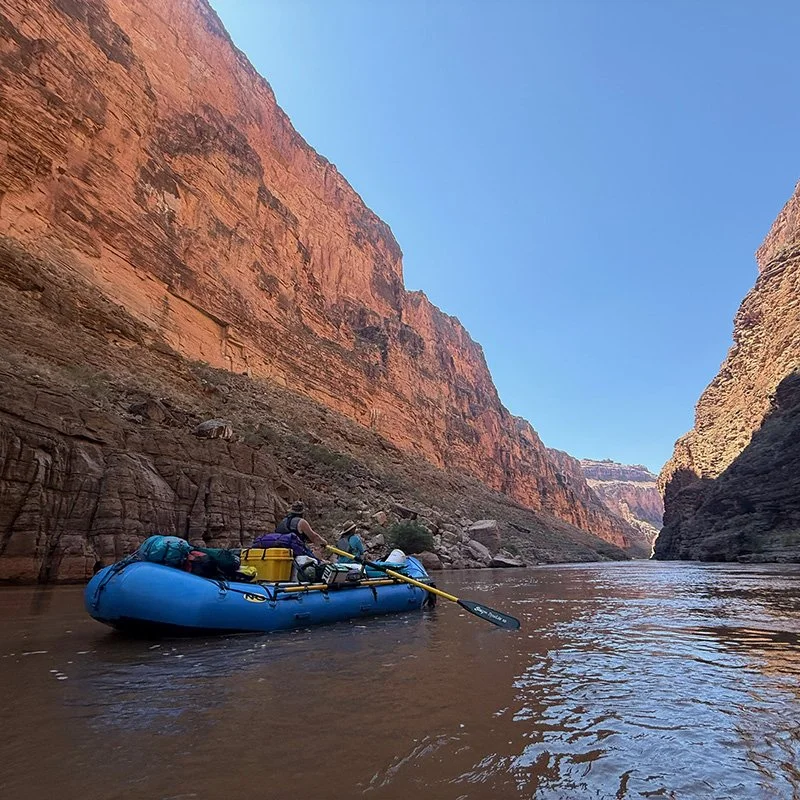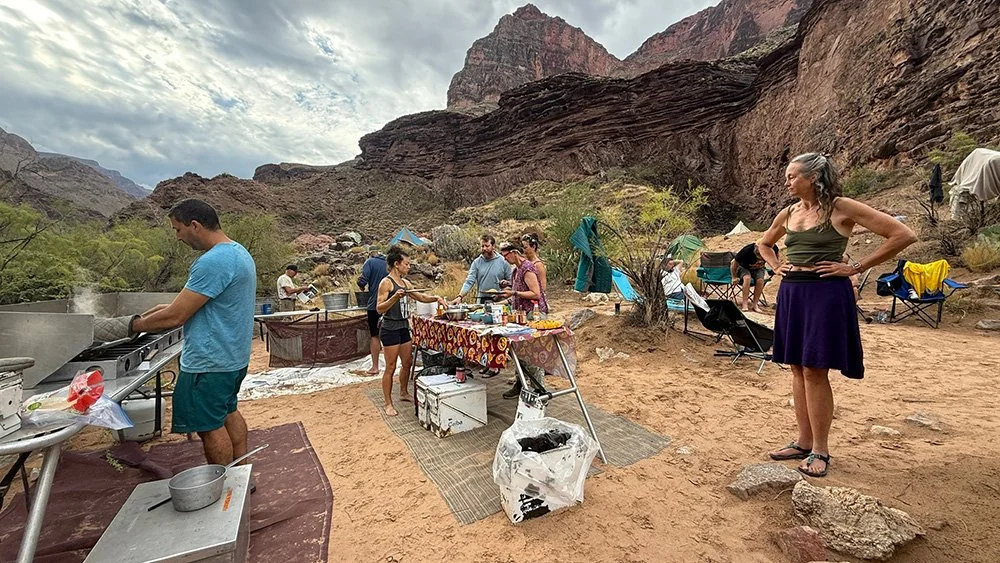Shanna’s professional life revolves around two wheels. She owns a bicycle component company and teaches mountain bike skills, helping riders push limits on the trail. But her love for outdoor adventure runs deeper.
In addition to her work in the bike world, Shanna is an accomplished Class V- whitewater kayaker—the highest level of runnable rivers, marked by powerful rapids, technical lines, and high consequences. Paddling at that level requires precision, trust, and composure under pressure.
After a kayaking injury in 2007, she stepped away from the water until MPT training helped her rebuild the strength and confidence she needed to return. What started as a focus on recovery evolved into total performance readiness, giving her the physical and mental stamina to face new challenges both on the bike and in the boat.
The Canyon in Motion: Skill, Strength, and Endurance
Shanna emphasized the importance of paddling with a trusted crew, people who are skilled, attentive, and invested in each other’s safety. Her past trips have taken her to rivers like the Cheoah, Ocoee, and Russell Fork for day runs, as well as the Middle Fork of the Salmon River, along with many others across Colorado, California, and Idaho. Each experience offered unique challenges and environments that demanded both precision and teamwork.
But the Grand Canyon was on another level. Over the course of 15 days, she and her group covered 220 miles of river, paddling anywhere from 9 to 30 miles a day through intense heat and rugged terrain. Every decision, from reading rapids to setting up camp, required focus, coordination, and grit.
After fifteen days of paddling, hauling gear, and braving desert heat, Shanna’s Grand Canyon journey stood as more than a physical achievement. It revealed her endurance, determination, and ability to adapt to the challenges of the wild—proof of what consistent effort and mental toughness can accomplish when conditions are at their toughest.
Life on the River
No hotels, no showers, no convenience stores. For more than two weeks, the Grand Canyon became home.
Each day started before sunrise, breaking down camp, loading the kitchen boat, and packing every personal item into dry bags and coolers, making sure everything was rigged to flip. The group carried about 40 gallons of water and had to settle and filter the rest along the way. Every meal, every piece of gear, and every drop of water had to be managed from put-in to take-out.
The group traveled through Ceiba, renting gear and purchasing food for the trip, but handling everything else themselves. Meals were cooked on the riverbanks, dishes were washed by hand in hot, boiled water to sanitize, and campsites were chosen by the flow of the river. After long days of paddling, they hauled heavy rafts ashore, unloaded food for each meal, and set up tents beneath massive canyon walls glowing orange at sunset.
By night, the desert came alive with stars sharp and endless against the black sky, the steady rush of the river echoing through the canyon walls. It was a kind of quiet you don’t find anywhere else. No phones, no traffic, no light pollution, just the sound of the river, the heat of the day still radiating from the rocks and sand, and the crew nearby settling in under the open sky.
Paddling Through Heat and Hardship
The Grand Canyon can be brutally beautiful. Daytime highs climbed as high as 120°F, with limited shade and relentless sun. The crew improvised constantly: pop-up umbrellas on rafts, long sleeves and 50+ SPF, soaking their sleeping mats and bodies in the river just to stay cool.
Each day meant eight to ten hours on the water, navigating rapids and stretches of still flow alike. When they weren’t paddling, they were carrying gear, refilling water containers, and setting up camp—all under the desert sun.
Movement, Mindset, and Teamwork
While physical strength played a huge role, Shanna emphasized the mental side of adventure. Every rapid required focus and presence, and the river demanded awareness, adaptability, and respect. Many times, she scrambled down the riverbanks, climbing around boulders to find the perfect spot to photograph or film the rafts coming through the rapids, leaving her to navigate the rapids solo while the rafts and paddlers waited for her below.
That level of attention mirrored what she practices in training: controlled movement, intentional form, and trust in her team. On the river, communication truly mattered. Every person’s awareness and effort contributed to the group’s safety and success.
Lessons from the River
By the end of the 220-mile journey, Shanna walked away with a deeper understanding of what her body and her training could do. The experience also reinforced the importance of caring for and protecting our public lands and wild places, the spaces that make adventures like this possible.
The trip reinforced the purpose behind MPT’s approach: building real strength for real life. The kind of strength that carries over to the moments that test your limits—the long days, the heavy loads, the heat, the rapids.
Her experience captures what MPT is all about: functional strength that translates beyond the gym. It’s about building endurance for long days like this and developing the ability to tap into energy you weren’t sure you had left, but still manage to find. It’s the kind of strength that shows up when the sun is unrelenting, when you still have to drag gear ashore, set up camp, and make dinner before you can finally rest.
That’s what we train for at MPT: to build strength, stay adventure-ready, and have the confidence that your body and mind can meet the demands required to conquer your goals, whether that’s lifting, paddling, hiking, or pushing through the final stretch when fatigue sets in.









